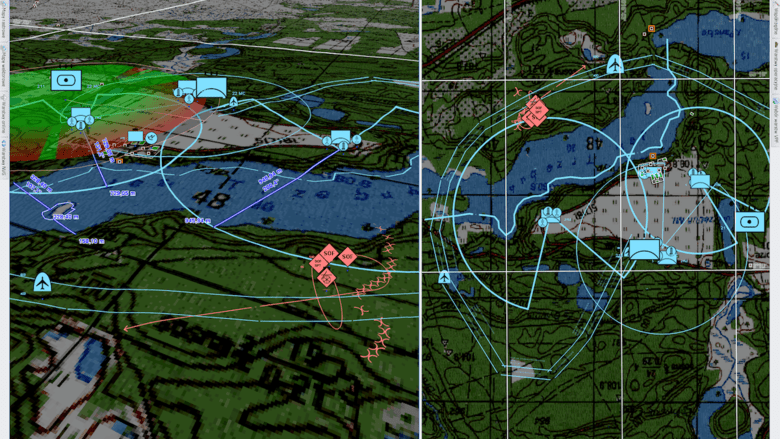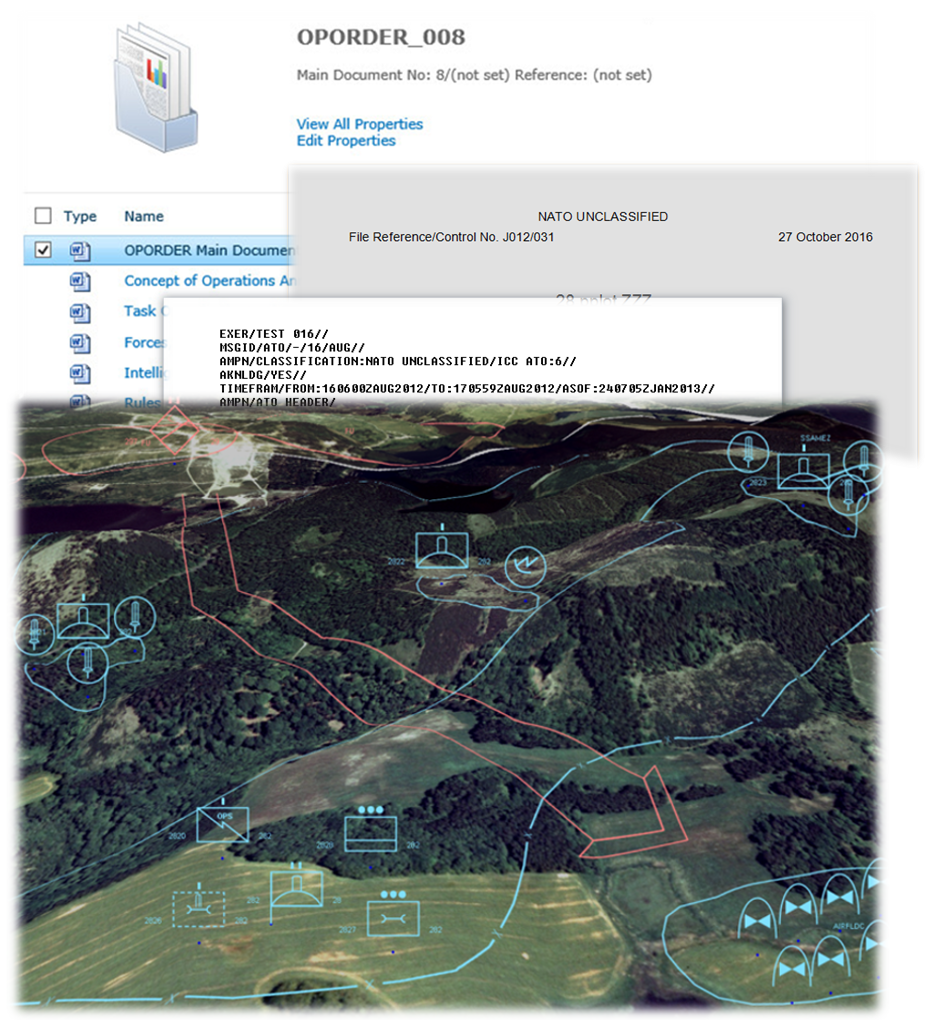Polish Land Forces Using the SZAFRAN C2IS Command and Control System

Each and every major military exercise, such as the ANAKONDA 18 exercise finalized in December last year, creates a perfect opportunity to have a look at the selected aspects of functioning of the Polish military. One of those aspects is the status of the systems that support the command processes. Both the users as well as creators of solutions as such get an excellent chance to scrutinize the practical applications of those systems in combat conditions – PIT-RADWAR SA’s Paweł Boryn and Marek Kołacz state.
The observations made act as a relevant ground for assessment of solutions applied currently. Furthermore, they are a good base for identifying new requirements and needs. The experience gathered during the exercise, as a result of operational use of C2 support systems and accomplishment of the exercise goals that proves the true capabilities of those systems, both can be used to shape the opinions on those systems, both in case of the user, as well as in case of the decisionmakers.
The present article offers coverage of use of the C2IS SZAFRAN solution throughout the course of the ANAKONDA 18 exercise. The aforesaid system was deployed with the command staff of the Multinational Corps North East. Even though the SZAFRAN C2IS system has been used since many years by the MCNE component, the use we have witnessed so far is usually taking place in an international environment. This does not allow the domestic experts to observe the capacity of this system in realistic conditions. The aforesaid professionals also do not get a chance to track its development and its facing challenges, as the system is working in the operational environment formed mainly by NATO systems.
During the ANAKONDA operation, the possibility of collaboration between the key commanding elements of the Polish military and the non-military assets, and selected NATO command structure elements as well, was verified. The unprecedented scenario of the exercise allowed the MCNE component to act in domestic domain and also in the key role of the LCC component [Land Component Command]. The MCNE element was burdened with commanding the land forces including the Multinational Division North East. For that unit ANAKONDA 18 was an event the objective of which was to confirm its combat readiness.
Szafran software interface screenshot. Image Credit: PIT-RADWAR.
Considering the scale and level of the undertaking, a demanding set of objectives has been defined for SZAFRAN C2IS. They may be outlined within the two tasks listed below:
- Organization and management of the whole LCC command, including all of its branches and functional domains at this level - 300 stations in total utilizing the system within the scope and to a degree justified by the operational needs of the individual elements or functional areas forming the C2 process at the command level;
- Integration with the operational environment and fusion of information among all of the commands and units involved in the scenario. SZAFRAN C2IS was directly connected to the commands of several collaborating and subordinated units. As the top level command staff unit it constituted the central point through virtually all data was transferred within the scope of interest and ability of the command support systems involved in the exercise. Despite the initial problems (usually occurring in case of any undertaking so complex, with numerous elements coordinated), SZAFRAN C2IS did very well, meeting the requirements defined.
Conclusions as such can be reached when analyzing the course of the ANAKONDA 18 exercise in the second portion of its course (staff-command-focused) involving around 5 thousand troops across a variety of roles, with the commanding units scattered across a number of sites (for instance: Warsaw, Elbląg, Cracow, Bydgoszcz, Poznań).
Command support systems and broadly understood ICT solutions undergo testing during dedicated events such as CWIX. Previously, the Polish military had organized the STOKROTKA operation for that purpose. However, it is the scale and drive towards operational profile we could have witnessed in case of ANAKONDA that remain the factors that allow us to speak of a true test for the systems. Effective accomplishment of tasks is as important here, as the “train as you fight” principle is. One needs to note that even though CWIX is dedicated for testing of such systems, the quasilaboratory setting and purpose of those tests remain incomparable to ANAKONDA 2018. In the latter case, the head of the MoD acted as the programming person, and as the entity that ordered the preparation and execution of the exercise. The exercise was directed by the Operational Commander of the Armed Forces.
The technicalities-focused profile of CWIX or Combined Endeavour exercises is the main problem related to operations as such. Thus no possibility exists to test the main capacity of the system acting as means of command support, meaning its ability to organize and support the effort undertaken by the commanding staff within the scope of actions and processes taking place during the command and control cycle. Moreover, there are no options of verifying the tools provided in the individual functional areas. The exercises as ones listed above are limited solely to certain aspects related to data exchange capabilities of systems as such. The information exchange capabilities alone cannot create a command support system that would be effective within the actual command and staff structure. The concept in which the C2 system acts as a basic asset shall be desirable and right one to assume. Meanwhile information exchange capacity as broad as possible, with the operational environment, constitutes one of the relevant features of a solution as such.

The aforesaid part two of the ANAKONDA exercise is a CPX operation (CPX – Command Post Exercise). Considering the Polish military doctrine, it would not be an error to perceive it as CAX (Computer Assisted Exercise). This is because a simulation system is used that allows for making decisions and receiving simulation results in real time, which facilitates planning and execution of further tasks.
Considering the above, the unique profile of the ANAKONDA 2018 exercise stems from the factors as follows:
- Deployment of a full command station, with a high number of C2 system workstations, high workloads and actual operation in a full spectrum C2 cycle;
- Multilevel deployment of command structures, with a majority of these working in field conditions;
- Geographical distribution of the staff elements and the elements playing the role of the adversary;
- Existence of the actual operational environment co-created by a whole range of systems utilized by the coalition, branches of the military, or for the purpose of supporting the individual functional domains;
- Using a simulation system generating a very high quantity of objects, making it possible to create a large scale threat/wartime environment.
These features make an undertaking as such a good base for analyzing, comparing and drawing conclusions pertaining to the individual C2 solutions.
At the moment the SZAFRAN C2IS system is undergoing an in-depth upgrade. Not only is the UI being changed, as the data processing technologies are modernized as well. The contractor recognizes the need to continuously develop the systems’ interoperability. At the moment it is expected that the solution proposed would be highly capable of working together with prospective C2 support solutions that would be used by the Polish military, such as ROSOMAK BMS or TYTAN. Another important goal set is to develop the SZAFRAN C2IS interoperability with the JTLS simulator solution (Joint Theater Level Simulation). This remains important as the user of the system carries out numerous exercises where SZAFRAN C2IS plays a key role, while the ability to use it as a data source for JTLS when creating the exercise scenario may create a new quality when preparing CAX training operations.
Marek Kołacz i Paweł Boryn, PIT-RADWAR SA
